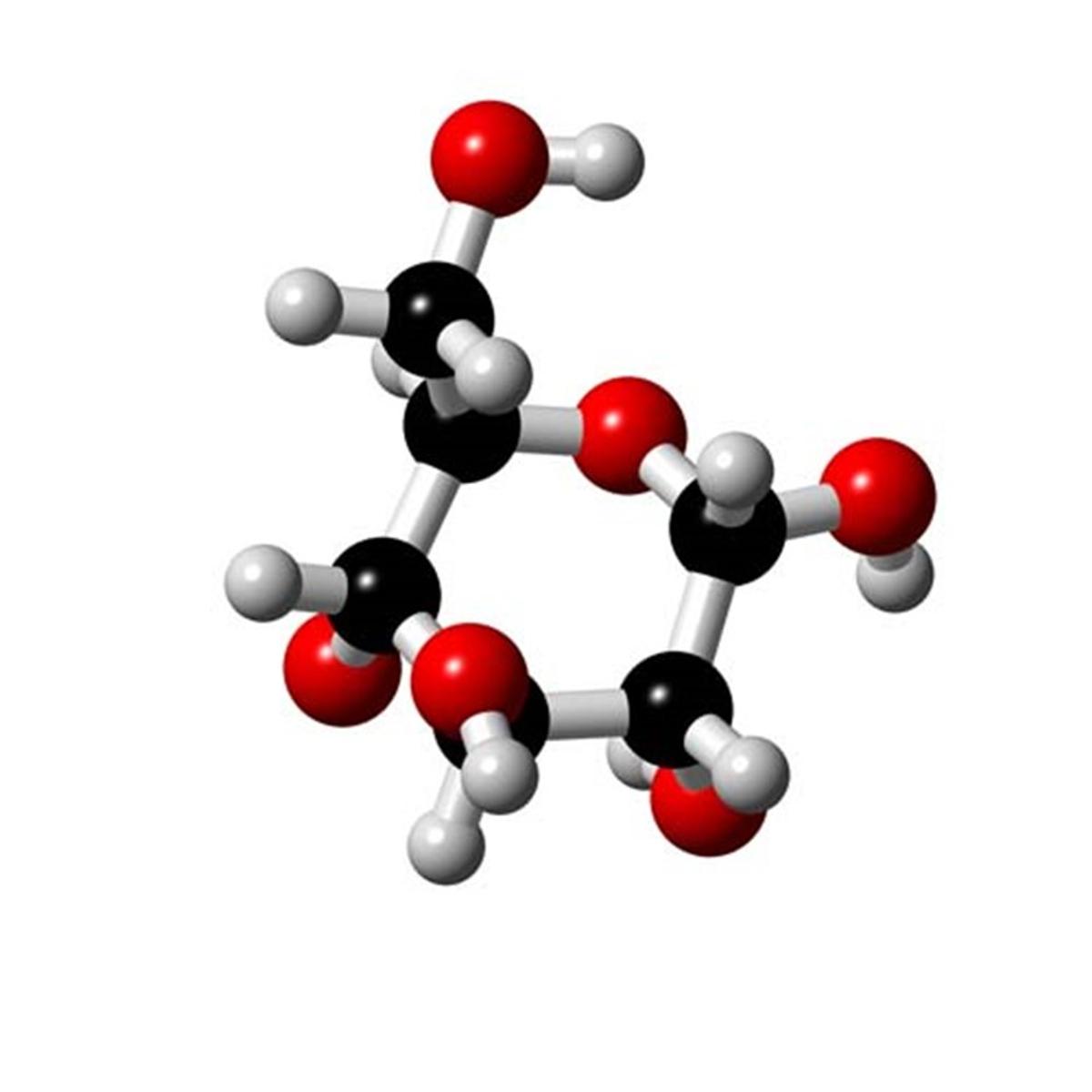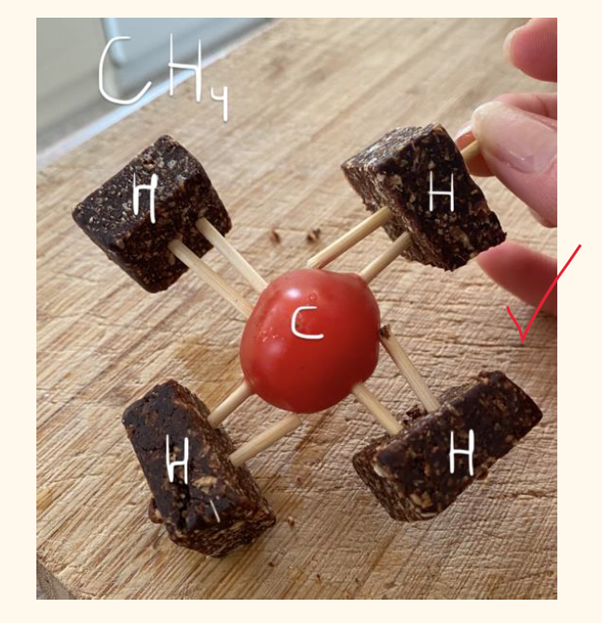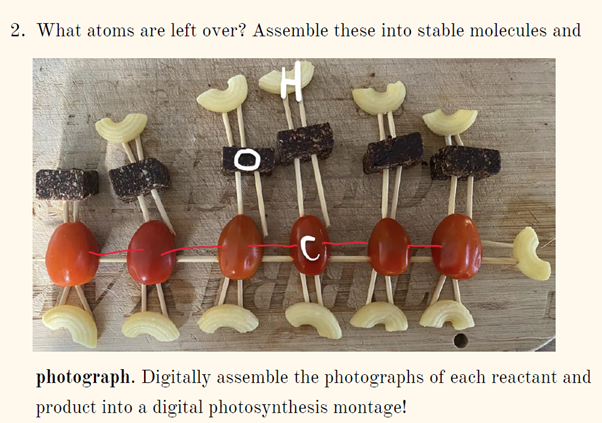Marshmallow molecules!

One of the major hurdles science teachers have to overcome with remote learning is working out how to model scientific phenomenon or how to keep up the practical content of our course without the usual access to our science labs.
Last week the year 10 Environmental Science class built 3D Glucose molecules using marshmallows. That’s right. They literally built sugar from sugar! Not all students managed to convince their parents that they needed a bag of sweets for the task and I was particularly impressed with some of the innovative carbon atoms made out of cherry tomatoes, hydrogen atoms out of pasta elbows and Oxygen atoms out of homemade hedgehogs.
Below is a rendered 3D image of a glucose molecule where the black balls are carbon, the red oxygen and the white, hydrogen atoms. I think our year 10s managed to pull together a remarkable piece of scientific modelling, grow their understanding of photosynthesis and cellular respiration and have a lot of fun at the same time. In fact, a few of them represented a more realistic structure than some of our chemistry kits produce!
Conclusion from Gracie Rawlinson:
In this learning task, I have learnt many things, including how atoms can share valence electrons and form a covalent bond, how photosynthesis and cellular respiration are a cycle within plants and how cellular respiration occurs within all organisms. I have also become more familiar with the processes of cellular respiration and photosynthesis, and I have learnt their relevance in helping slow climate change. I know now just how important plants are to helping stop climate change, and I can understand why at a more detailed level, as I now know the atomic level of some of the processes that occur within plants. I also understand more fully why plants need water and sunlight in order to survive. I have learnt how big of a role the carbon cycle plays in climate change, and I understand more deeply the actions we, as humanity, can take to help stop this, such as burning much less fossil fuels and growing more trees.








